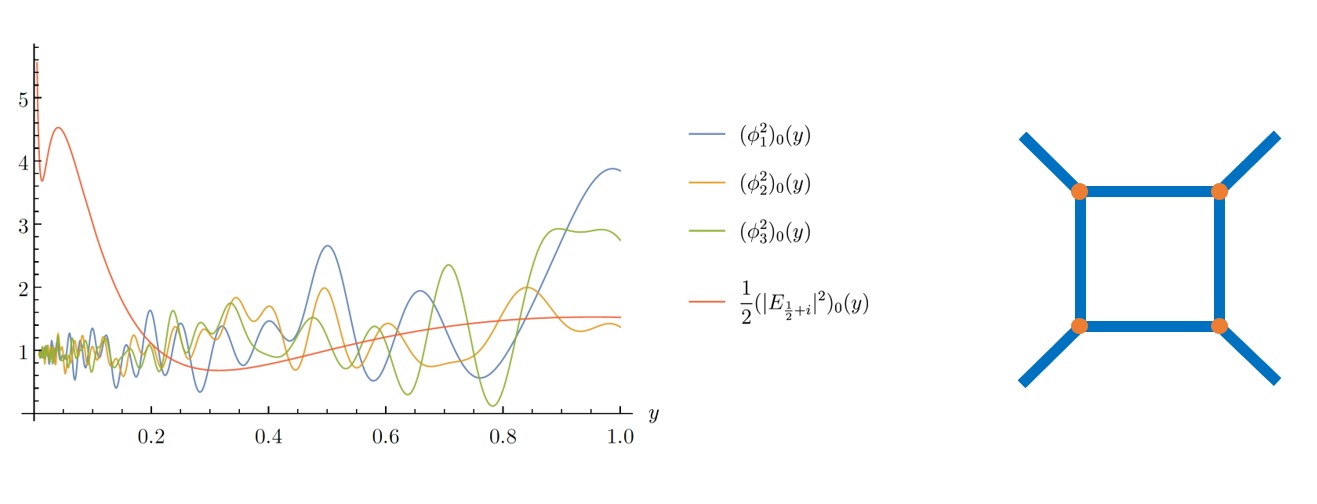

such as scattering amplitudes of a quantum field theory (right).
Solving strongly-coupled quantum field theory, the framework for describing systems of highly-interacting particles, remains a major challenge in theoretical physics. In super-symmetric theories, powerful dualities often equate strongly-coupled, chaotic regimes with weakly coupled, soluble regimes; the full consequences of these dualities for physical observables, such as spectral excitations and correlations, are not well understood.
Recent work by Eric Perlmutter of IPhT Saclay, together with Scott Collier of the Princeton Center for Theoretical Science, made progress in this direction in a particular supersymmetric toy model for quantum chromodynamics. By novel adoption of mathematical tools from spectral analysis, they discovered a presentation of many observables which manifests their duality symmetries, opening doors to a new style of computation. Their approach reveals connections to quantum chaos, and indicates that averaging over ensembles of quantum field theories, as often done in the study of disorder, can lead to emergent strong coupling dynamics. Connections to gravity and string theory suggest further avenues for understanding the power of these symmetries.
Link to publication in Journal of High Energy Physics:
